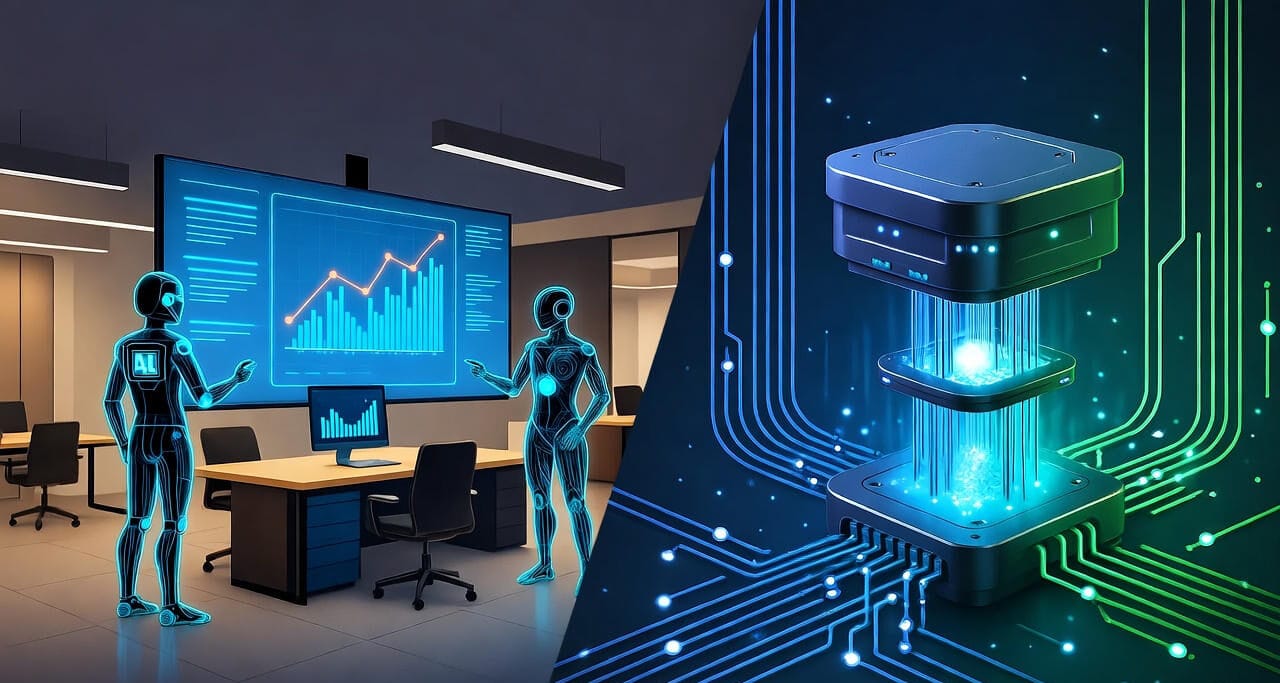
In the rapidly evolving landscape of technological innovation, quantum computing breakthroughs in 2025 are poised to redefine industries from finance to pharmaceuticals. As nations and corporations pour billions into this field—culminating in the United Nations’ declaration of the International Year of Quantum Science and Technology—these advancements promise unprecedented computational power. Drawing on recent milestones like extended qubit coherence and hybrid system deployments, this article explores how quantum computing breakthroughs are transitioning from labs to real-world applications, offering a glimpse into a future where complex problems are solved at speeds unattainable by classical computers. With global investments surpassing $1 billion in projected revenues for quantum firms this year, the implications for efficiency, security, and discovery are profound.
The Core Science Driving Quantum Computing Breakthroughs
At the heart of these quantum computing breakthroughs lies the manipulation of qubits—quantum bits that leverage superposition and entanglement for parallel processing. Unlike binary classical bits, qubits enable exponential computational scaling, but challenges like error rates and decoherence have long hindered progress. In 2025, innovations in error correction and materials science are bridging this gap, making fault-tolerant systems a tangible reality.
Advancements in Qubit Stability and Scale
Recent developments underscore remarkable strides in qubit longevity and system architecture. For instance, French startup Alice & Bob’s cat qubit technology now sustains bit-flip resistance for over an hour, a feat that dramatically cuts error-correction demands. This builds on Nobel laureate Shinya Yamanaka’s foundational work in induced pluripotency, adapted here for quantum resilience.
Similarly, Harvard researchers unveiled a 3,000-qubit continuous-operation system on September 25, 2025, maintaining quantum states for more than two hours. Published in Nature, this platform excels in connectivity and fidelity, enabling computations that could simulate molecular interactions for drug discovery in mere minutes.
- Key Benefits of Extended Coherence: Reduces computational overhead by 50-70%, accelerating applications in optimization and cryptography.
- Scalability Milestones: From 100 qubits in 2023 to over 3,000 today, paving the way for 1 million-qubit machines by 2030.
- Material Innovations: Silicon spin qubits from Diraq and imec achieve 99.9% gate fidelity using CMOS processes, integrating seamlessly with existing chip fabs.
These quantum computing breakthroughs not only enhance reliability but also democratize access, as standardized manufacturing lowers barriers for widespread adoption.
Error Correction
Error correction remains pivotal among quantum computing breakthroughs. IBM’s Quantum Loon processor, slated for 2025 deployment, tests quantum low-density parity-check (qLDPC) codes, promising 20,000-fold operation increases by 2029. This modular approach—featuring long-distance qubit couplers—mitigates noise, a primary decoherence culprit.
Commercial Impacts of Quantum Computing Breakthroughs

Beyond academia, 2025 marks the commercialization surge of quantum computing breakthroughs. Enterprises are harnessing hybrid quantum-classical systems to tackle real-time challenges, yielding measurable ROI in sectors hungry for speed and precision.
Finance and Trading Transformations
A landmark collaboration between IBM and HSBC launched the world’s first quantum-enabled algorithmic trading platform on September 29, 2025. Operational in live markets via IBM’s Quantum Network, it exploits superposition to assess myriad scenarios instantaneously, slashing execution times from hours to seconds. While experts caution on hype—citing scalability as a near-term limit—this tool exemplifies quantum’s edge in risk modeling and portfolio optimization.
In parallel, IonQ’s Algorithmic Qubit score hit 64 on September 30, 2025, boosting efficiency in financial simulations. Partnerships with Nvidia and AWS have streamlined Monte Carlo analyses, vital for derivatives pricing.
- Efficiency Gains: Up to 30% faster risk assessments, per HSBC pilots.
- Cost Reductions: Hybrid models cut supercomputing needs by 40%, easing data center strains.
- Security Enhancements: Quantum-resistant algorithms safeguard against emerging threats like Shor’s algorithm.
Healthcare and Materials Science Applications
Quantum computing breakthroughs are revolutionizing drug discovery. IonQ-AstraZeneca collaborations simulate protein folding with 12% speed-ups over classical HPC, accelerating therapies for diseases like Alzheimer’s. Meanwhile, Australia’s $620 million PsiQuantum investment targets a fault-tolerant machine for Brisbane, focusing on molecular modeling.
In materials science, Harvard’s system simulates superconductors at scale, informing battery tech for renewables. These applications highlight quantum’s role in sustainable innovation.
Ethical and Regulatory Challenges Ahead

As quantum computing breakthroughs accelerate, so do concerns over equity, security, and governance. The U.S. CISA’s May 2025 mandate for post-quantum cryptography in federal systems addresses “harvest now, decrypt later” risks, urging global standards.
Navigating Security and Accessibility
Bioethicists warn of a “quantum divide,” where only well-funded entities access these tools. Initiatives like Illinois’ $500 million quantum park aim to foster inclusive ecosystems, but disparities persist.
- Policy Recommendations: International treaties for ethical qubit use, akin to nuclear non-proliferation.
- Sustainability Focus: ICQE 2025 discussions emphasize low-energy designs to counter data-center-like power draws.
- Workforce Development: Training programs to upskill 1 million professionals by 2027.
Regulatory bodies like the EU’s Quantum Flagship are harmonizing frameworks, ensuring breakthroughs benefit society broadly.
The Future Horizon for Quantum Computing Breakthroughs
Looking to 2026, quantum computing breakthroughs forecast hybrid supremacy, with IonQ and IBM targeting utility-scale demos. As tools like Quantastica’s algorithm generators lower entry barriers, industries from logistics to climate modeling stand to gain.
These 2025 milestones affirm quantum’s trajectory from novelty to necessity, demanding balanced stewardship. For stakeholders, the imperative is clear: invest in innovation while prioritizing ethics. As we navigate this quantum era, the potential to solve humanity’s grand challenges— from curing cancers to optimizing global supply chains—remains tantalizingly within reach.






